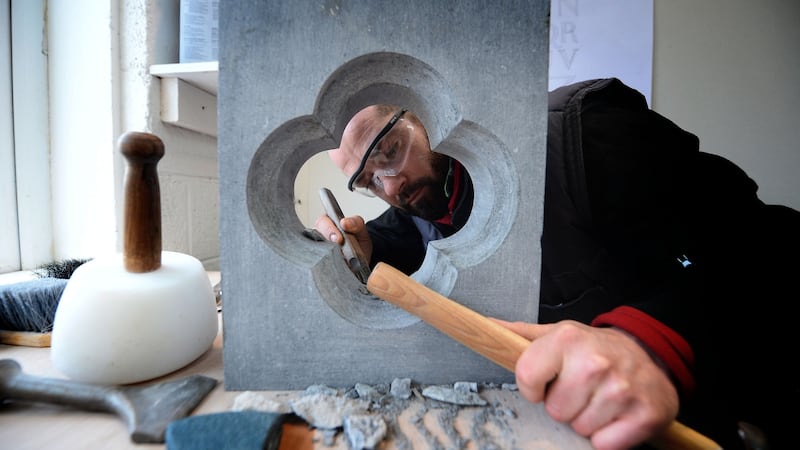There’s never been a better time for further education and training (FET). Today’s students know that the CAO is not the only show in town. The problem is that there are now so many options, it can be difficult to wrap your head around them.
Fear not! Our A-Z guide aims to give you all the information you will need.
A is for Apprenticeship
Get a nationally recognised qualification or degree in an area that interests you. Learn through a mix of on-the-job experience and classes, many of which are held in the technological universities. Instead of stressing about money, like most students, get paid to learn. Choose from craft apprenticeships such as motor mechanics, carpentry, plumbing and bricklaying, or the newer professional apprenticeships that include auctioneering, accounting, cybersecurity, recruitment, sales and more.
That said, many budding apprentices report significant difficulties in finding an employer – worth bearing in mind, and an issue in urgent need of attention from the Department of Further and Higher Education.
RM Block
B is for Bridge
While FET is a valuable qualification in itself, it is also a bridge to college. A growing – albeit still limited – number of college places are reserved for FET students who do well on their course.
In recent years, the CAO has allowed people to apply for FET through its portal, which was once exclusively reserved for third-level applicants.
C is for Community education
The unsung hero of the education sector, community education has produced some outstanding graduates, including Senator Lynn Ruane.
It takes place in the local community and outside the formal education sector. There’s a heavy focus on social justice and helping people make a positive contribution to society.
The third-level sector is slowly coming around to including learners in the design of programmes, but community education has always done this. Although these programmes often take place in more marginalised communities, they are inclusive and open to all.
Contact your local education and training board.
D is for Dropout
There’s a strong body of evidence to show that college students who completed a PLC course first are more likely to stay in college.
Andrew Brownlee, chief executive of the further education and training agency, Solas, says that studies have shown that participants on PLC courses have an advantage over their peers in college, because they’ve had that extra year between school and college (although some courses run for two years) to take stock, grow as a person and develop soft skills such as teamwork, independent thinking and critical analysis.

E is for Education and Training Board (ETB)
ETBs around the country have responsibility for delivering further education and training programmes. They’re usually your first port of call if you want any help or need any further information. There’s a full directory of ETBs at etbi.ie.
F is for FetchCourses
FetchCourses.ie is an online hub that provides information on further education and training courses in your community. thisisfet.ie
G is for Green
There is a growing focus on green skills and environmentalism through FET, including courses in sustainable energy, sustainable development, wind turbine engineering and retrofitting. There should be no shortage of jobs in these areas over the coming decades.
H is for Help
FET takes place locally, meaning that students don’t have to worry about moving hundreds of miles to a new city, with all the costs and upheaval that can entail. And FET students can access financial help and support. Ask your local ETB or check out the eligibility reckoner at susi.ie, the organisation that awards higher and further education grants.
I is for Information
There’s no shortage of information out there, including Qualifax.ie, fetchcourses.ie and solas.ie. But your local ETB may be the best starting point.
J is for Jobs
FET has a very specific mission – to respond to the local needs of industry and employers, and provide a steady stream of job-ready graduates. If you’re on a FET course, chances are that it exists because an employer has identified a need – so this makes you very employable. In 2021 more than 90 per cent of FET graduates were either employed or still accessing further and higher education.
K is for Kids
Childcare is one of the biggest challenges for adult learners or young parents. Women are disproportionately affected by the childcare burden, putting them at a disadvantage compared with men.
FET participants, however, may be eligible for childcare supports. More information is available on citizensinformation.ie. You can also find out more by contacting your local ETB.
L is for Lifelong learning
Further and higher education are not end points any more. Constant technological advancement and new discoveries mean we all have to update our skills throughout life. Many of these courses are offered through FET. So even if you go straight to higher education, there’s a good chance you’ll need to engage with FET down the line.
M is for Mature students
Whether it’s a mature student – in this context, people aged 23 and over – entering further or higher education for the first time, or returning to learn after time in the workplace, it can feel daunting. But both sectors are well-used to mature learners and can offer plenty of support.

N is for National Tertiary Degrees
One of the best educational innovations of recent years. Instead of CAO points, people can apply directly for one of these degrees, offered in a range of subjects and disciplines across Ireland. Places are awarded through interview and personal statement.
It really is a “best of both worlds” option: start off on a Post-Leaving Certificate course, gaining a lot of hands-on experience in smaller classes, before transferring to a higher education institution after a year or two, ultimately graduating with a degree. The first year is free, but normal registration fees may apply after that. nto.hea.ie
O is for Online
While the pandemic saw a shift to online learning, the pendulum has swung back towards in-person classes. But there are still lots of remote learning options across FET, which can be particularly important for carers and people with disabilities. Your local ETB can help with information. Or, use the location filter to search for online courses at the FET Course Hub.
P is for PLC
Once a fallback for people who didn’t get their college course of choice, Post-Leaving Certificate courses are now a first choice for many.
These are full-time programmes, usually lasting one to two years, with a practical, target focus. They’re more vocationally than academically focused.
Teachers are often industry experts with lots of real-life experience working in their subject area.
PLCs provide job-specific training and a valuable qualification in their own right, but they’re also a stepping stone to further education, with growing numbers of progression routes between the further and higher education sectors.
Many students find them a really helpful bridge between school and third level, with smaller class sizes and a focus on developing many of the skills – research, communication and teamwork, to name a few – that anyone needs in higher education.
Many PLCs include practical experience: if you’re studying a PLC in science, for instance, you’ll get to spend time in a lab, or if you’re studying the creative arts, there may be an opportunity to organise a show or exhibition.
Q is for QQI levels
Quality and Qualifications Ireland (QQI) is the gold standard accreditation for further and higher education in Ireland. Most FET courses have it.
If you want to know if your qualification will be accepted by employers in and outside Ireland, checking if it is QQI accredited is your starting point. Bear in mind that a lack of QQI accreditation is not necessarily a warning sign, as there are plenty of courses without it – but, if it’s not there, it does mean checking who accredits your course.
QQI identifies courses under the National Framework of Qualifications, running from certificates at level one to doctoral (PhD) degrees at level ten.
R is for Reform
Forgive your parents if they baulk at the idea of further education.
Back in their day, apprenticeships were more limited in scope. Solas, the national agency responsible for FET, didn’t exist; instead, there was Fás, which ultimately closed after being mired in scandal.
The political and media focus – including in this newspaper – was almost entirely on the competitive CAO points race and how to get into college courses.
So much has changed. Solas hit the ground running, not just providing and co-ordinating FET options but also researching policy in this area, working with the Department of Further and Higher Education to help develop options and opportunities for learners of all ages. There’s more work to be done, but there has been positive change in this area, which is beginning to break the dominance of the higher education sector.
S is for Skills
When it comes to FET, the focus is all on skills: specific training for in-demand roles, all while developing those all-important soft skills that modern employers want: research, communication, teamwork, self-awareness and more.
T is for Traineeship
These are short courses, developed with employers, with a laser-focus on teaching specific skills for in-demand roles. They span a wide range of industries, from animal science through to care, engineering, fashion and beauty, manufacturing, media, sports and leisure and more.
Once primarily a way for unemployed people to retrain, they can benefit school-leavers or people taking a year between school and college too. You’ll find well over 100 traineeships on fetchcourses.ie, while your local ETB can also provide more information.

U is for Unemployment
Education is how people can build a better life for themselves and their families, while making a vital contribution to society. And education – especially FET – is the main line out of unemployment.
V is for Vocational
Not everyone is academic. That reflects the normal distribution of human interests and abilities. Ireland, however, can be very snobby about vocational education – that is, education focused on employment and industry needs – particularly compared with our European neighbours. About half of second-level students in Germany, for instance, take a vocational route. Ignore the snobbery. Follow your own path.
W is for Work experience
An integral component of apprenticeships and traineeships, and now offered on many PLC courses – with third-level colleges and universities lately following their lead. Work experience not only gives people a chance to develop skills, but it also sets one graduate apart from another.
X is for eXtra curricular
One of the big turn-offs in FET was a poorly developed social side, compared with higher education. That has all changed. Places such as Bray Institute of Further Education and Ballyfermot College of Further Education have smaller classes, so you get to know your peers, and they also have many extracurricular options.
Z is for Zenith
FET has improved so much over the past 15 years. It’s not yet at its zenith (or peak – come on, allow a bit of licence!) but it’s not far off, and there’s never been a better time to check it out.




















